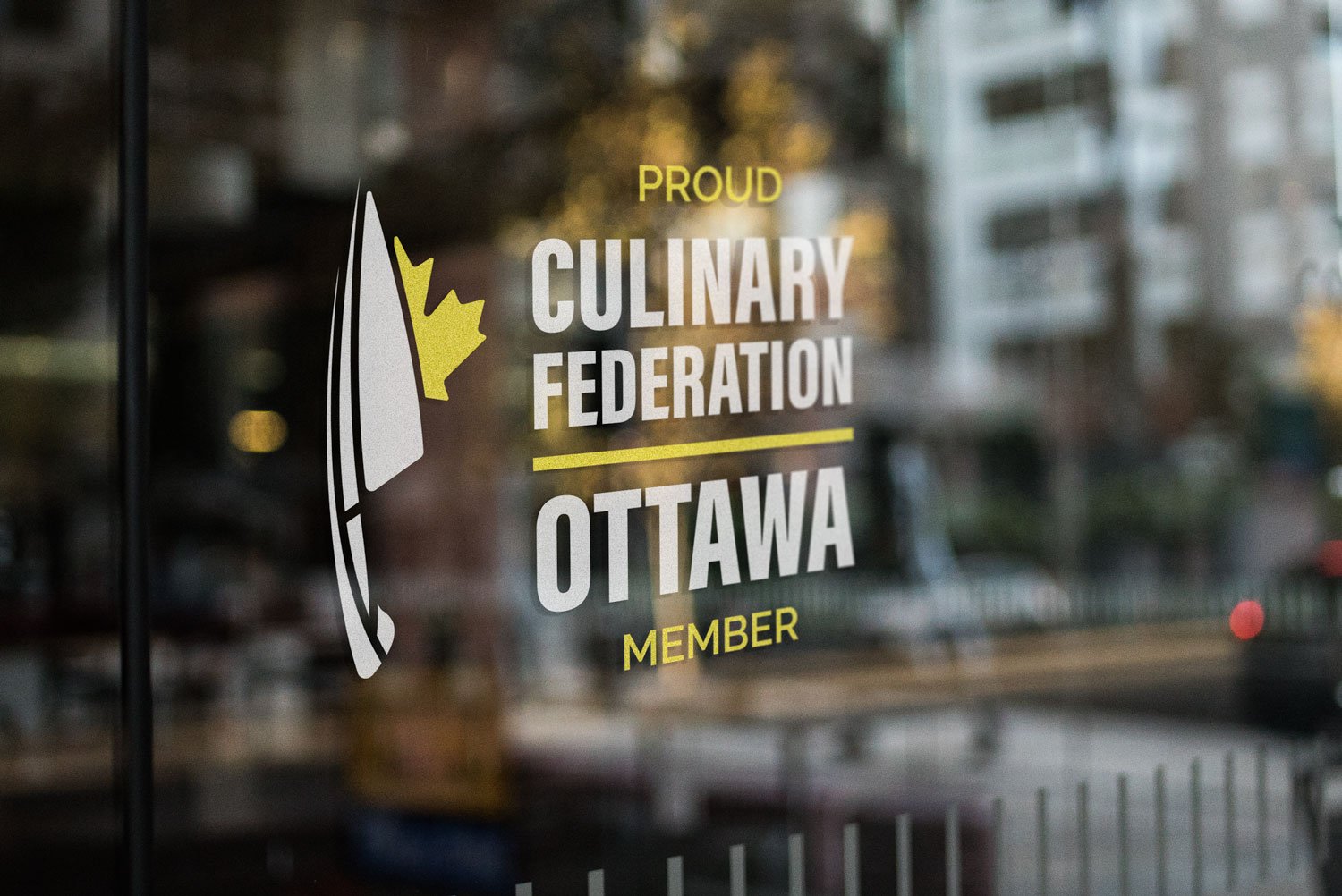Canadian Culinary Federation OttawaRebranding CF Ottawa to modernize its image, attract younger members, and strengthen its connection with the national Canadian Culinary Federation.
Market analysis, user research, branding, wireframing & prototyping, UX/UI design, HTML & CSS development, and stakeholder management.
Key skills used:

-
Problem statement
The Canadian Culinary Federation Ottawa’s branding and digital presence was not effectively engaging younger members or clearly communicating its connection to the national Canadian Culinary Federation. This hindered member growth and relevance, requiring a rebrand to refresh its image and enhance user engagement.
-
Objective
The goal was to refresh the Canadian Culinary Federation Ottawa’s branding and digital experience in order to attract younger members, improve engagement, and clearly communicate its affiliation with the national Canadian Culinary Federation. Overall to increase membership and strengthen its relevance in the culinary community.
-
Team roles
I contributed as the lead web designer/developer, responsible for both the technical and design aspects of the website. I focused on creating an intuitive, seamless and visually engaging user experience while ensuring the site aligned with the updated branding, which was developed in collaboration with and led by Delphine Sullivan.
The outcome
Culinary Federation Ottawa rebrand 🏆
2nd Place Winner — RE/ACTION Showcase
This project covers the rebranding of the Culinary Federation’s Ottawa chapter. It includes the design of a new website and logo, as well as the creation of brand guidelines, which illustrate dos and don’ts when using the CF Ottawa brand.
Presenters: Diandra Thompson and Delphine Sullivan
Professor: Jed Looker (Algonquin College)
Industry Partner: Culinary Federation Ottawa
Year: 2019

A brief overview of the UX process
01 | Emphasize & understand
The goal of this stage is to understand users’ needs and challenges through research methods like interviews, surveys, and observations.
We gained a thorough understanding of the problem through conducting in-depth user research. This included interviews with CF Ottawa members, such as chefs and industry professionals, to identify their needs, frustrations, and expectations. We also conducted stakeholder interviews with CF Ottawa leadership to gain clarity on their vision for the rebrand and define key business goals, such as attracting younger members and strengthening connections with the national Canadian Culinary Federation.
This research informed the product definition to ensure the design would address both user needs and business objectives. We clarified the value proposition: creating an inclusive platform that resonates with a wide range of culinary professionals, from seasoned chefs to emerging talent and industry partners. Finally, we established the project scope, balancing user insights and business goals to define key deliverables that would meet the needs of CF Ottawa’s diverse membership.
02 | Discover & define
This phase synthesizes research, explores solutions, and prioritizes features that align with user needs, business goals and design opportunities.
We analyzed data from user interviews, surveys, and stakeholder conversations to identify key patterns, pain points, and aspirations across seasoned chefs, emerging talent, and industry partners.
Pain Points & Aspirations:
Seasoned chefs often struggled with networking and lacked platforms for meaningful collaboration. They wanted recognition, opportunities for peer connection, and a space to share their knowledge and expertise.
Young culinary talent expressed feelings of isolation and a lack of mentorship, with a strong desire for skill-building opportunities, community support, and career guidance.
Industry partners were eager for stronger collaboration with the culinary community and to seek more direct engagement with chefs and a better understanding of emerging trends.
User Profiles & Personas: We created detailed personas based on these insights to ensure the platform addressed the specific needs of each group. These personas helped us prioritize features and design solutions that resonate with users at all stages of their culinary careers.
03 | Ideate
The ideation phase focuses on generating creative solutions and refining concepts based on insights gathered during the research phase.
We translated research insights and defined goals into potential design solutions. With a clear understanding of user needs, pain points, and aspirations, this phase was focused on brainstorming and sketching to explore a wide range of creative possibilities. Our goal was to generate innovative ideas that would address both user challenges and business objectives, while ensuring a cohesive and engaging user experience.
04 | Design & test
This is where our ideas from the Ideation Phase come to life in the form of high-fidelity interactive prototypes.
We developed high-fidelity mockups that embodied a modern, inclusive aesthetic for CF Ottawa’s diverse members. Interactive prototypes were created to simulate key user journeys and test functionality, followed by usability testing to identify pain points and gather feedback on navigation, clarity, and design. Based on user insights, we iterated on the design to refine navigation and enhance the overall user experience. Once validated, we finalized the design assets and UI specifications for development.
05 | Develop
In this phase, we transition from high-fidelity mockups to a functional platform, while ensuring the design vision is accurately implemented and the platform meets both user needs and business goals.
I translated high-fidelity designs into a functional platform while collaborating with the team on design assets, UI specs, and interaction guidelines. I also integrated key features such as networking tools, skill-building resources, and event management while ensuring seamless functionality, alignment with user needs, and a strong focus on usability and accessibility.










